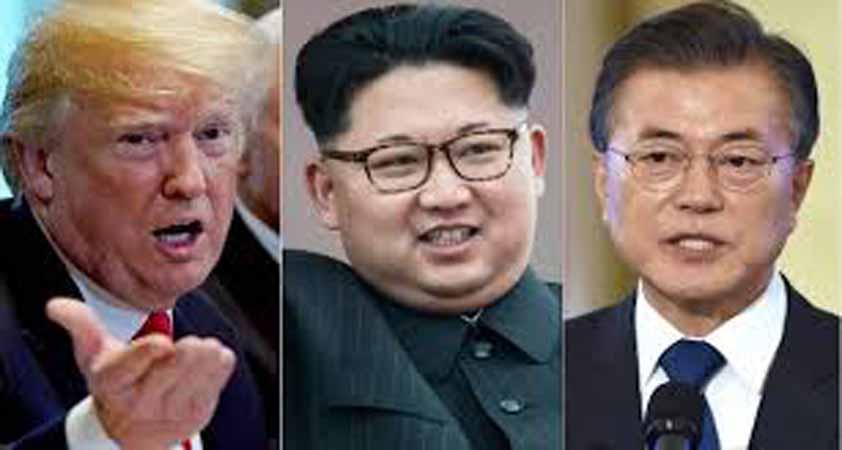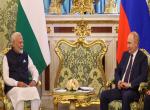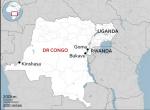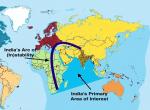James Clapper, former director of national intelligence of the Barack Obama administration – otherwise a severe critic of the US President Donald J Trump’s various policies 1- recalled in a 19 May 2018 article for the New York Times what he was told by the commander of the US forces in the Korean Peninsula in 1985. Retired Lt Gen Clapper, then the chief of intelligence of the US forces in South Korea was informed by the commander that 48 hours of “unambiguous warning” was needed in event of North Korea invading South Korea across the DMZ (Demilitarised Zone).
Clapper wrote that he researched the problem for more than a year. Then he went back to the commander and told him that the only time he would know that war had begun would be when artillery shells start falling on Seoul. Clearly through this narrative Clapper wanted to make two points: one, there was no good intelligence about the Hermit Kingdom leadership’s intents and actions; and two, the conventional deterrence in Korea was quite fragile and vulnerable. The same situation exists even now. Thus, when Trump decided to get-off the escalation ladder of threats and counter-threats, he was lighting a lamp at the end of a rather dark tunnel. He was bringing out North Korea (DPRK) after its series of ballistic missiles and nuclear weapons tests. Those pointed to an ICBM, which could reach not just “contiguous USA,” or Guam, but all the way as some of the Americans analysts are now terming the reach of the ICBM, Hwasong 15 to even Washington DC.
Trump’s effort was not to put conditionalities before the 12 June Summit in Singapore, but to make “denuclearisation” the centre piece of negotiations between the two countries. For Kim Jong-un, the goals were somewhat intertwined: his top-most priority was a security guarantee from the USA that would support sustaining his regime, while he also wanted the removal of the US troops from South Korea. Besides, for him “denuclearisation” meant the removal of the tactical nuclear weapons the USA had put on South Korean soil. More importantly, it was the eternal desire of the North Koreans to be adjudged by the world as a leading power, courtesy an acknowledgement by the USA.
The Singapore summit yielded a joint statement. The two key points of the communiqué: the USA and DPRK pledged to work for regional peace and stability; and two, they will work for ‘denuclearisation’ according to the tenets of the Panmunjom agreement struck between the two Koreas. Many analysts of the Western world believe that the security guarantee pledged by the USA– albeit promised indirectly in the subtext of the first meeting ever of an American head of state held with a DPRK supremo – was the reward that Kim received without having to give up anything. But the ‘chief negotiator’ of Washington had already told his national and international audience that ‘denuclearisation’ would not occur in a hurry. This nuanced realism emerged from the Trump White House after the ‘here today, gone tomorrow‘ play Kim put up for the Americans before he finally sat down with Trump. Aware of the need of the US president to make an exhibition of self-propagated negotiating skills, especially after his withdrawal from the Iran deal on substantively the same issue about nuclear weapons development, Kim played him off against his desires for seeking legitimisation of his own rule. He made sure that the un-immutable nature of his power in DPRK was significantly in focus.
Having said that, he did not blanch from putting on the table the negotiable nature of the nuclear arsenal. This is despite Kim Jung-un himself amending the 1998-2009 Constitution of the country in 2012, and introducing the nuclear clause in the Preamble. The provision had stated: “In the face of the collapse of the world socialist system and the vicious offensive of the imperialist allied forces to stifle the Democratic People’s Republic of Korea, Comrade Kim Jong-il administered Songun politics; thus he safeguarded with honour the achievements of socialism which are the precious legacy of Comrade Kim Il Sung, developed the DPRK into an invincible politico-ideological power, a nuclear state and an unchallengeable military power, and opened a broad avenue for the building of a powerful socialist country.” ‘Dear Leader’ Kim thus received his tribute for safeguarding DPRK’s security.
Indeed, the North Korean desire for reaching intended end states – including emerging out of early famine conditions – by exchanging the currency of nuclear weapons is a well developed tactic. Kim Jong-il, the 36 year-old current incumbent’s father had shown that in the 1990s with the Bill Clinton Administration. He put the nuclear programme on the table as a signatory of the NPT. He even put his reactor at Yongbyon that enriched his Uranium, on IAEA inspection list. But that this was only a temporary measure to gain sanctions relief was evident in the way DPRK withdrew from the NPT in January 2003, soon after then US president, George W Bush, named the country in his famous ‘Axis of Evil’ list. While withdrawing, Kim Jong-il claimed that DPRK’s action was under Art 10 of the NPT that stated ‘under extraordinary circumstances’ a country could abrogate its responsibilities under the Treaty.
‘Dear Leader’ of DPRK had clearly stated the US was planning pre-emptive strikes against nuclear installations of the nation and thus it was beholden to maintain its own security. Interestingly, Pyongyang had withdrawn its representative from the IAEA in 1994. But at each time, it had sought to take pragmatic view of the situation by which the nuclear weapon programme could be often be slowed down or even stopped in exchange of various relief measures of the West in a nuclear weapon order where the latter had framed the rules.
In light of the Panmunjom communiqué signed by Moon Jae-in of South Korea and Kim Jong-un of the North as a precursor to the Singapore Summit mentioned earlier, it is worthwhile to recall the ‘Joint Declaration of the Denuclearization of the Korean Peninsula’ of 1992. Though the first provision of the ‘Declaration’ was violated – that neither of the Koreas will “test, manufacture, produce, receive, possess, store, deploy or use nuclear weapons,” the spirit of the communiqué was not violated in entirety. While this 1992 ‘Declaration’ was invoked this time around, it did not enter into force even as the proviso for achieving the same could not be agreed upon by either side by 1993.
Panmunjom communiqué is much broader in its context. Titled the ‘Panmunjom Declaration for Peace, Prosperity and Unification of the Korean Peninsula,’ it deals with the ‘denuclearisation’ aspect in the last, sub-section 4 of Article 3 of the document. Parsing the text, two points appear striking: one, Seoul appear to have issued, ipso facto, a cleaner bill of health to the North on the ‘denuclearisation’ issue; and that both the parties agree to the involvement of ‘international community’ in the process of ‘denuclearisation’ of the peninsula. In other words, this brings to bear the IAEA and any other related UN agency into the latter operation. Clearly, the driving motive of Kim is to open up his country to the growth engines of the region like its kin, South Korea or its moving force, China, or even Japan. Be that as it may, Shinzo Abe thinks that Donald Trump has left him and his nation in the lurch. An article published by Japan Times on 20 June 2018, alludes to Japanese leader feeling sidelined in the great geopolitical play.
Author Jeffrey Hornung concludes that the road to denuclearisation of Korea passes through Japan on many counts. But all of the actions left for Japan seem to be clutching at straws. For example, Japan could provide funding and technology for decommissioning the nuclear weapon development sites in DPRK. Also if hostilities break out in the region, the forces under the aegis of the United Nations could use seven bases in Japan as staging posts. That would signal a conventional deterrence failure of massive proportions, which seems to have missed the author.
But as Asian observers, India will not be able to ignore the grave resultant impact the conflict can have – as defined by Clapper and quoted earlier in this piece. Whether it takes the vanguard role it played in upholding the armistice that followed the cessation of hostilities in Korea 1950-51 on an UN mandate, or whether it takes on the role of managing the nuclear waste (the material like enriched Uranium or even Plutonium that would be produced out of the decommissioned nuclear warheads), it would have to enact a significant role in resolving the crisis. For the latter, India’s considerable science and technological expertise would have to be called upon, for a globe to have one less nuclear weapon power.
- James R Clapper is currently a Senior Fellow, Belfer Center for Science and International Affairs, Harvard University)
(The paper is the author’s individual scholastic articulation. The author certifies that the article/paper is original in content, unpublished and it has not been submitted for publication/web upload elsewhere, and that the facts and figures quoted are duly referenced, as needed, and are believed to be correct). (The paper does not necessarily represent the organisational stance... More >>
Image Source: https://encrypted-tbn0.gstatic.com/images?q=tbn:ANd9GcQ9IOkemlMIzdTrxsQrHbjAiV7PnkdrZiDthywLjERliU9_Zcn2jg










Post new comment